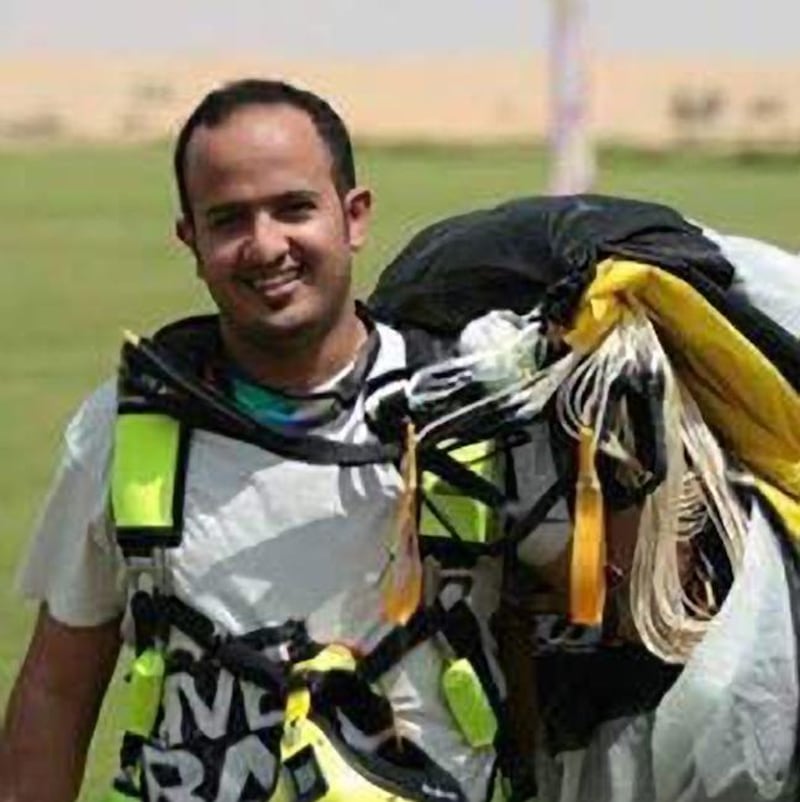DUBAI // An investigation into a fatal parachute crash that killed an experienced Saudi skydiver found that the accident was likely caused by his “loss of situational awareness”.
Majed Al Shuaiby, 35, from Riyadh, died in April last year after jumping from a Skydive Dubai plane while on holiday with his brothers. He was considered to be an “expert diver” who held a class D licence issued by the United States Parachute Association and had performed more than 500 jumps, including 340 with Skydive Dubai.
The General Civil Aviation Authority Air Accident Investigation Sector was able to reconstruct a timeline of the events using footage recorded by an accompanying skydiver who jumped with a GoPro camera. Although Al Shuaiby was also wearing a GoPro, the memory card given to investigators did not capture the fall, according to the report.
The footage shot by the second skydiver showed that seconds after Al Shuaiby deployed his main canopy, after about two minutes of free flight following an uneventful exit from the plane at 13,000 feet, he could be seen “entering into an anti-clockwise spiral dive” that lasted about 13 seconds.
“The probable cause for this action was that he might have lost his situational and altitude awareness as it appeared that he was far from the designated landing area,” according to the report.
Al Shuaiby appeared to “regain control” for a very brief period as the video shows him flying towards the landing area. But after about 13 seconds, the video shows him making “a sharp turn, probably due to releasing the parachute breaks”. This sharp turn precipitated an “anticlockwise spin at an approximate rate of one spin every three seconds” that lasted for about 18 seconds until Al Shuaiby hit the ground.
During such rapid spinning, “increasing centrifugal forces will make arm movement difficult, and may cause the skydiver to lose consciousness (red-out) due to the blood flow to the eyes”.
In an emergency situation involving the main canopy that cannot be resolved by 2,500 feet, skydivers are trained to “cut away the main canopy and deploy the reserve canopy”.
Malfunctions, such as a loss of canopy control, are normally caused by bad packing, poor body position during canopy deployment, and/or faulty equipment, said the report. It also noted that investigators were given access to Al Shuaiby’s parachute equipment and helmet only one month after the accident because they had been in police custody.
They did not have access to his GoPro camera or personal log. They found the main canopy was in good condition and that the canopy suspension lines were intact. But investigators “could not determine the last person in (Skydive Dubai) who had packed the main canopy of the parachute, but it was normal practice for experienced skydivers to pack their own canopies”.
Investigators issued six recommendations for consideration by the GCAA, including establishing an agency to oversee the safety and governance of all aerosport activities.
newsdesk@thenational.ae






